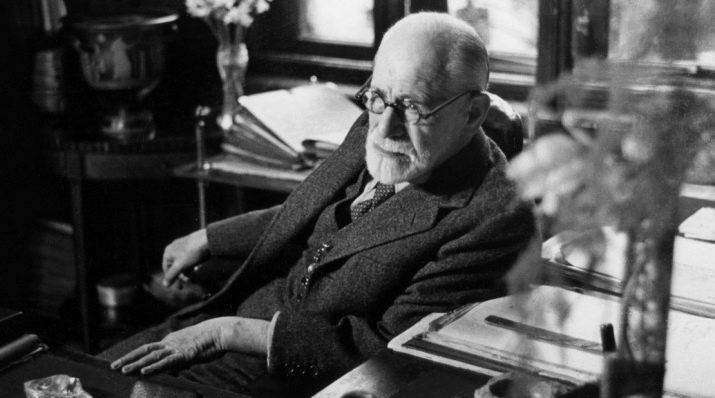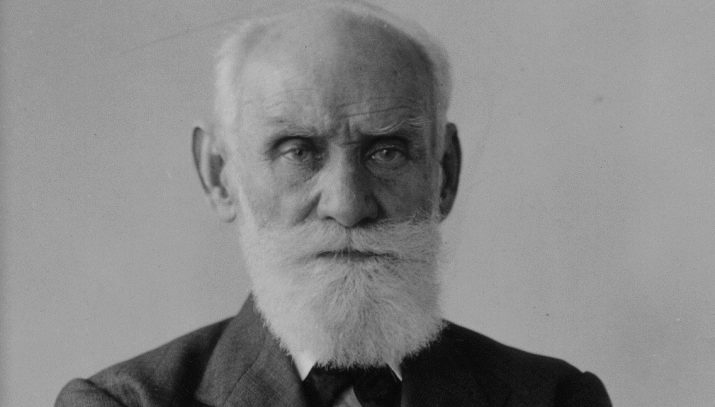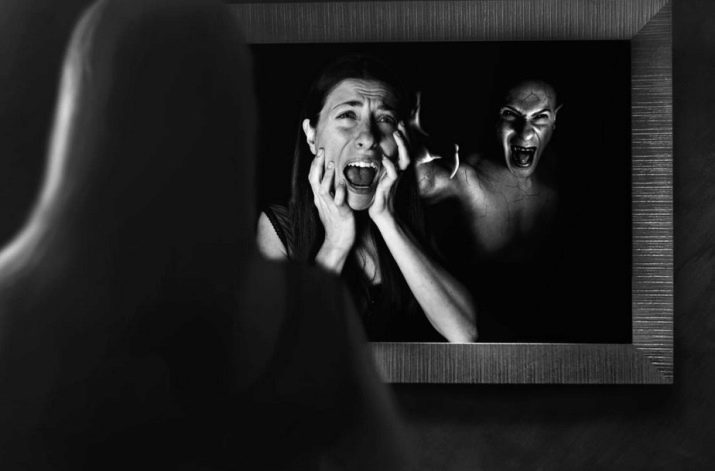Sometimes people experience the strange feeling that they are not at all. This is how one can briefly characterize the state of a person with obsessions. Periodically, he ceases to be himself and experiences unusual thoughts, feelings, he is overcome by strange, and sometimes frightening ideas.
Syndrome Description
The obsession is a syndrome in which a person has obsessive thoughts and ideas from time to time. A person suffering from such a syndrome cannot discard them and continue to live in peace; he concentrates his attention on them, and this causes unpleasant emotions and a state of stress.
A person can neither get rid of them nor take them under control. Not always, but often a person moves from bad thoughts to business, materialization occurs. Such actions resulting from an obsession are called compulsions, and the syndrome itself, if accompanied by thoughts and deeds, is called obsessive-compulsive (or a syndrome of obsessive thoughts and actions).

The first signs of this syndrome were described in 1614 by Felix Plater. Dr. Westphal described in detail what was happening to the man in 1877. It was he who came to the conclusion that even if the rest of the human intellect is not disturbed, there is no opportunity to drive away negative thoughts.
He suggested that the fault of thinking was to blame, and modern doctors adhere to this point of view. The first successful steps in the treatment of obsession were made by a Russian scientist and doctor Vladimir Bekhterev in 1892.

To understand how widespread this phenomenon is, sociologists from the USA suggested turning on the fantasy: if you bring all Americans together with obsessions together, you get a whole city whose population will make it fourth in the USA after cities such as New York, Los Angeles and Chicago.
In 2007, WHO physicians calculated: in people with obsessive-compulsive disorder in 78% of cases regularly repeated negative, and sometimes openly aggressive obsessions. About one in five with such a problem suffers from obsessive, obscene, obscene drives. In people with neurosis, about one third of the cases are among other symptoms.

Discussions can affect any area of a person’s life. The most common examples are repeated obsessive thoughts about your own mistakes, wrong actions, pathological fear of something that appears in periods. In psychology, this condition is called the disease of doubt, and the essence is fairly accurately reflected in this name.
To cope with fears and pathological drives, a person sometimes has to develop a cycle of actions (compulsions). For example, with an irrational fear of contracting infections, a person begins to wash his hands constantly (up to hundreds of times a day).


Phobic thoughts about the presence of bacteria and viruses around are obsessions, and handwashing is compulsions. Compulsions are always clear, repeating in nature, this is a kind of ritual binding on humans. If you break it, you may experience a panic attack, hysteria, aggression.

Classification
Many generations of scientists and doctors have tried to create a more or less intelligible classification of obsessions, but their variability is so wide that it became very difficult to make a single classification. And here's what happened:
- obsessions are classified as psychiatric syndromes, since they are based on a reflex arc;
- obsessions are considered a disorder of thought (or an associative disorder).
As for the types of obsessive thoughts or combinations of thoughts and actions, then the opinions of experts were divided.

The German psychiatrist Karl Jaspers in the middle of the last century proposed dividing the obsessions into:
- abstract - not associated with the development of a state of affect;
- fruitless philosophies - empty pronounced verbal criticism with or without;
- manic arithmetic count - a person is trying to calculate everything;
- intrusive, constantly returning memories from the past;
- separation when speaking words into separate syllables;
- figurative (accompanied by fears, anxiety);
- obsessive doubts;
- obsessive drives;
- representations that periodically completely take possession of a person.

Researcher Lee Baer decided to simplify things and suggested dividing the entire variety of obsessions into three large groups:
- obsessive obsessions of an aggressive nature (hit, beat, insult, etc.);
- obsessive thoughts of a sexual nature;
- obsessive thoughts of religious content.
The Soviet psychiatrist and sexologist Abram Svyadoshch proposed to divide the obsessions according to the nature of their appearance:
- elementary - appear after a very strong external stimulus and the patient himself perfectly understands where they came from (for example, fear of driving in a car after an accident);
- cryptogenic - their origin is not obvious to either the patient or the doctor, but they are, and their patient remembers, simply does not connect the event with the subsequent development of obsessive thoughts.


The psychiatrist and pathophysiologist Anatoly Ivanov-Smolensky proposed the following separation:
- obsession of excitement (in the intellectual sphere it is usually ideas, ideas, certain memories, fantasies, associations, and in the sphere of emotions - phobias, fear);
- obsessions of delay, inhibition - conditions in which the patient cannot make certain movements at will in traumatic situations.

Causes of occurrence
The reasons for the occurrence of obsessions are even more complicated than with the classification. The fact is that very often obsessive thoughts or their combination with compulsions are symptoms of various mental illnesses that have different causes, and sometimes have no obvious reasons.
Therefore, there is no direct relationship between certain factors and the subsequent development of obsessive-compulsive syndrome.
But there are several hypotheses according to which doctors made a tentative list of factors that can (theoretically) influence the likelihood of obsessions:
- biological factors - brain diseases, injuries, disorders of the autonomic nervous system, endocrine disorders associated with the production and quantity of serotonin and dopamine, norepinephrine and GABA, genetic factors, infections;
- psychological factors - features of personality, temperament, deviations in character, personality deformation professional, sexual;
- social factors - overly strict (often religious) upbringing, inadequate reactions to situations in society, etc.

Consider each group of factors in more detail.
Psychological
The famous scientist Sigmund Freud considered sexual obsessions the “work” of our unconscious, because it is there that all intimate experiences settle. Any experiences and injuries associated with sex remain unconscious, and if they are not repressed, then their presence may appear from time to time, including obsessive syndrome. They invisibly affect the psyche, human behavior.
Obsession is nothing more than an attempt at old experiences or trauma to regain consciousness. Most often, according to Freud, the prerequisites for obsessive disorder are laid in childhood - these are complexes, fears.

Freud's follower and student psychologist Alfred Adler claimed that the role of sex drive in the formation of obsessions is somewhat exaggerated. He was sure that the basis was an internal conflict between the desire to gain a certain power and a sense of one’s own inferiority, inferiority. In this way, a person begins to suffer from obsessive thoughts when reality is in conflict with his personality.

Special attention is paid to the theory of Ivan Pavlov and his comrades. Academician Pavlov looked for reasons in certain types of organization of higher nervous activity. He called obsessive thoughts and compulsions relatives of delirium, in all these conditions excessive activation of certain zones occurs in the brain, while others show inertia and paradoxical inhibition.

Biological
Most often, experts rely on the neurotransmitter theory of the origin of obsessions. In particular, a low level of serotonin in the body can lead to disruption of the interaction of the parts of the brain, which manifests itself as an obsession. In this case, the serotonin reuptake is excessive, and the next neuron in the chain does not receive the desired impulse.
This hypothesis was confirmed after antidepressants began to be used - against the background of their intake, the condition with obsessive syndrome improves markedly.
A connection between dopamine levels was also observed - in patients with obsessive syndrome, it is elevated. The amount of serotonin and dopamine rises in the body during sex, while drinking alcohol, delicious food. And cause the rise of dopamine can not only all of the above, but even some memories of pleasant. Therefore, a person again and again mentally returns to what pleased him.
The theory was confirmed after the successful use of drugs that block the production of dopamine (antipsychotic drugs).

The hSERT gene is also suspected of developing obsessions. In addition, this syndrome often appears with schizophrenia, neurosis, phobia of any type. In addition to all of the above, scientists have discovered a relationship between bacteria and mental disorders.In particular, obsession can lead or aggravate the course of streptococcal disorder.
Human immunity throws forces to fight them, for example, during a sore throat, but the attack of immune bodies is so strong that other tissues suffer, that is, an autoimmune process begins. If the tissue of the basal ganglia suffers, then with a high degree of probability, obsessive-compulsive disorder can begin.

Depletion of the nervous system is also a prerequisite for the development of obsessive states. This is possible after childbirth, while breastfeeding, after suffering an acute infectious disease. Genetic theory also has fairly convincing data: up to 60% of children in obsessive adults inherited the disorder. It is believed that the hSERT gene in the 17th chromosome pair is responsible for the transfer of serotonin.

Symptomatology
Since the name of the syndrome is hidden almost its entire meaning, it should be understood that the main symptom of a mental disorder is the presence of obsessions or thoughts. For example, a child or an adult has an obsession that he is dirty. In order to get rid of her at least temporarily, a person begins to constantly wash, look in the mirror, sniff at the smells of his own body.
And at first it helps, but with every next bout of obsession the usual actions are no longer enough, washing becomes more frequent, and it brings relief for a short while, thoughts of dirt return treacherously.
Symptoms depend on which obsessions and in what combination are presented.
The fact is that one person can have several types of obsessive thoughts at once. Violations are manifested in different ways: some spontaneously and suddenly, while others experience certain individual “precursors” some time before the obsession.

The appearance of obsessive thoughts, ideas occurs against the will of man. But consciousness as a whole does not suffer and reason is in perfect order, the patient critically evaluates himself and understands the shame or unacceptability of his idea, his desire. However, getting rid of thoughts does not work. It should be noted that sick people struggle with thoughts in different ways: actively or passively.
Active confrontation is an attempt to do the opposite of obsessive thoughts. For example, a person comes up with the idea of drowning. To crush her, some active fighters go to the embankment and stand for a long time at the very edge of the water.

Passive obsessional wrestlers choose a different path - they try to shift their attention to other things, avoid thoughts, and in a similar situation, a person will not only not go to the river, but will also avoid water, bath, pool.
Intelligence remains intact, a person is capable of analysis, cognitive processes. But additional suffering causes the idea that obsessions are unnatural, and sometimes even criminal.

Distracted obsessions are manifested multifaceted.
- Sterile philosophies - a condition in which a person can talk for a long time about anything, but most often - about religion, metaphysics, philosophy, morality. He understands the meaninglessness of these arguments, he would be glad to stop, but he does not succeed.
- Obsessive recurring memories - It is noteworthy that more often than not important events (wedding, birth of a child) come up in memory, but small things of a domestic nature. Often this is accompanied by the fact that a person begins to repeat the same words.
Figurative obsessions are often manifested by doubts - a person is tormented by the thought of whether he turned off the iron, gas or light, whether he solved the problem correctly. If he has the opportunity to check, then repeated testing of the same can become a compulsion - a ritual action necessary to calm at least for a short while. If there is no way to check, then the person constantly goes over in his head what and how he did, recalls the whole chain of his actions in search of a possible error.

Obsessive anxieties, fears proceed even harder. A person cannot do the usual things, focus on current tasks, he constantly scrolls through his head the scripts of possible negative events that can happen to him.
Obsessive drives are the most dangerous obsession.
With her, a person painfully wants to do something dangerous or obscene, for example, to kill a child or rape a neighbor in the stairwell. Almost never such obsessions lead to real crimes: like fruitless reasoning, they remain only in the patient’s head.
Possessing ideas are characterized by a distortion of reality in the patient’s thoughts. For example, after the death of a loved one and the funeral, the patient may believe that he was buried alive, did not verify his physical death. They can vividly imagine what a relative was like, when he woke up underground, they suffer from these thoughts.
Compulsions can be manifested by an irresistible desire to go to the grave and listen to the sounds from underground. In severe cases, active patients begin to write complaints, petitions asking them to allow exhumation.


Violations in the sphere of emotions are manifested by increased suspiciousness, high anxiety. A person is depressed, feels inferior, unsure. Irritability increases, a person can become depressed.
The perception of the world is also changing. Many people start to avoid mirrors - it becomes unpleasant for them to look at themselves, they are afraid of their own “crazy look”. In communication with others, such a sign often appears as refusal to look into the eyes of the interlocutor. In severe obsessions, hallucinations, which are called Kandinsky's pseudo-hallucinations - a taste disorder, a sense of smell, in which sounds and tactile perception are distorted.

At the physical level, obsessions most often have the following symptoms:
- the skin turns pale;
- there is an increased heartbeat, cold sweat;
- dizzy, fainting conditions are possible.
Is it necessary to say that gradually the character of a person suffering from a obsessive syndrome for a long time is changing. Traits appear in it that were previously completely unusual for a given person.
If a person lives with obsessive thoughts for more than 2 years, the changes can be very noticeable to others. Suspiciousness, anxiety increase, self-confidence decreases, it becomes difficult to make even simple decisions, shyness increases, difficulties arise in communicating with others.

Fear Management Techniques
It is impossible to effectively combat obsessions on their own and to treat them is impossible. You need to contact a psychiatrist or psychotherapist and undergo a diagnosis. If you suspect an obsession, use a special test system (Yale-Brown scale).
Only a doctor can distinguish obsessive-compulsive syndrome from delusional state, schizophrenia, neurosis, post-traumatic syndrome, bipolar disorder, postpartum depression, psychosis and mania. It is very important to establish concomitant violations, because the choice of treatment method will depend on this.
The most effective method to get rid of obsessive thoughts and images is psychotherapy. Most often, cognitive-behavioral, exposure psychotherapy, as well as a method called the “method of stopping thought” are used.
The doctor’s task is to replace the old attitudes with new, positive ones, create favorable soil so that a person can get carried away with something new, interesting, and be able to escape from old thoughts. Good result gives occupational therapy. According to the situation, the doctor can use the possibilities of hypnosis, NLP, teach the patient autotraining and meditation.

Sometimes medications come to the aid of a therapist - tranquilizers, antidepressants, antipsychotics. But separately, such drugs (tablets and injections) will not take effect. Without psychotherapy, they will only mask the symptoms without affecting the mechanism for the development of obsessions.As experimental methods of treatment, vitamin therapy, mineral preparations, as well as nicotine intake in certain dosages are used (on which the beneficial effect of nicotine is based in this case, however, is unknown).
Forecasts with timely treatment are positive - in most cases, if the patient cooperates with the doctor, tries to follow all recommendations, the obsessions are reversible.

The following video will talk about treatment methods for obsession.











